In 2009, Swiss neuroscientist Henry Markram introduced an idea that stunned the scientific community: fully simulating the human brain—with its 86 billion neurons and 100 trillion synapses—using a computer.
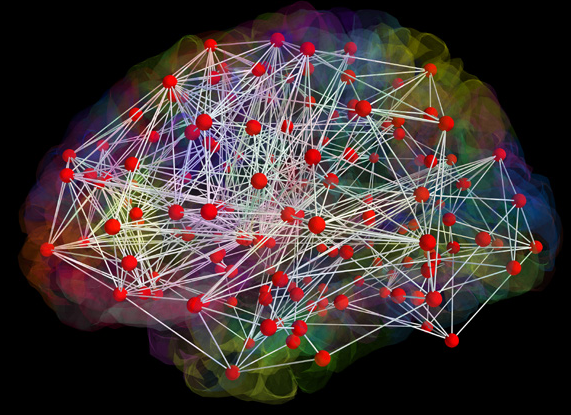
▷ Figure 1. The Virtual Brain supports computational modeling of the brain at a network scale. Source: Jan Paul Triebkorn
If this “crazy” idea were realized, it could not only open up new avenues for treating brain disorders such as Alzheimer’s disease but also provide invaluable biological insights for the development of intelligent robots.
In 2013, with the backing of the European Union and other supporters, this ambitious concept finally became a reality when the Human Brain Project (HBP) was officially launched.
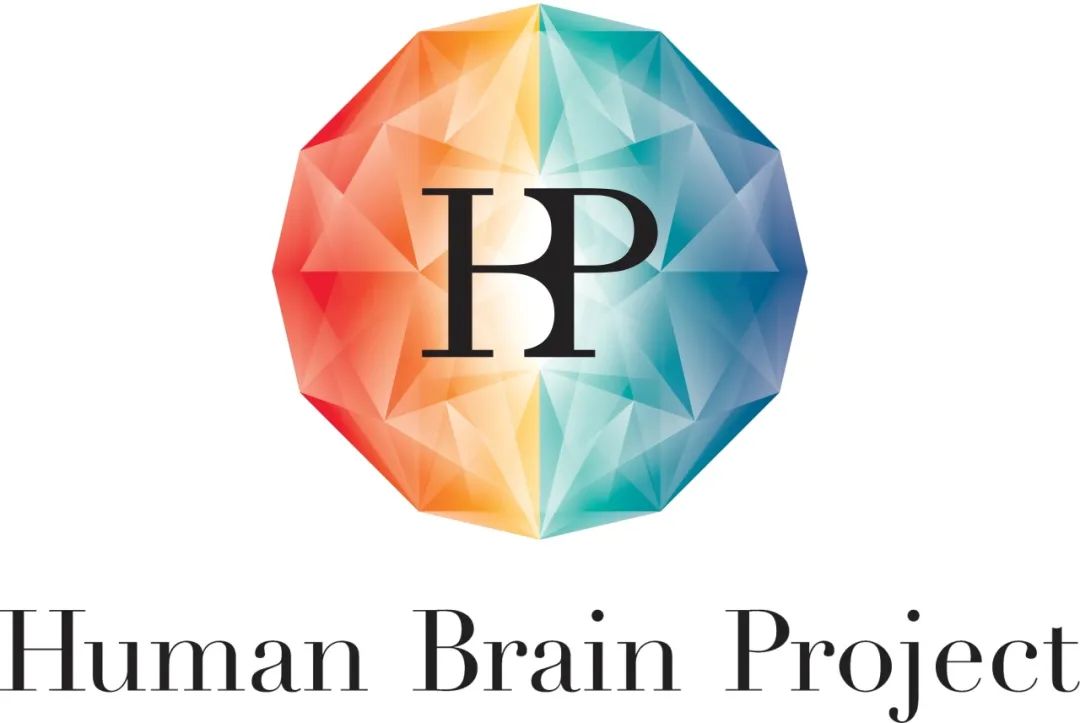
▷ Figure 2. Human Brain Project (HBP). Source: HBP official website
This grand scientific endeavor—comparable in scope to last century’s moon landing project—shifted its focus to an even more enigmatic realm: the “inner universe” within our skulls. Aiming to understand the complexity of the human brain and advance the treatment of neurological diseases, it boldly confronted various challenges in neuroscience, vowing to unlock the ultimate mysteries of the human brain.
Now, a decade later, in September 2024, an independent report comprehensively summarized the progress of the HBP in advancing brain science research, simulating the brain, and translating its findings into practical applications [1].
What breakthroughs has this project, which began as a scientist’s “wild dream,” achieved? What limitations has it encountered along the way? And in today’s era of rapidly advancing artificial intelligence, what lessons can we learn from the HBP’s experiences? Let us look back at the ten-year journey of this “grand scientific project.”

HBP Data Overview
The Human Brain Project (HBP) is a large-scale research initiative launched by the European Union in 2013. Its goal is to advance neuroscience, computer science, and medicine by simulating and understanding the complex functions of the human brain.
At that time, the global scientific community showed immense interest in brain science, computing technology, artificial intelligence, and their potential medical applications. Although previous studies had achieved significant progress, there was still a lack of integrated models—spanning multiple scales and dimensions—that could comprehensively explain how the brain operates at the biological, chemical, and physical levels. In this context, the HBP aimed to address key challenges in brain research—particularly the etiology of brain diseases and the operational mechanisms of neural networks—by leveraging neuroscience, computational science, and interdisciplinary collaboration.
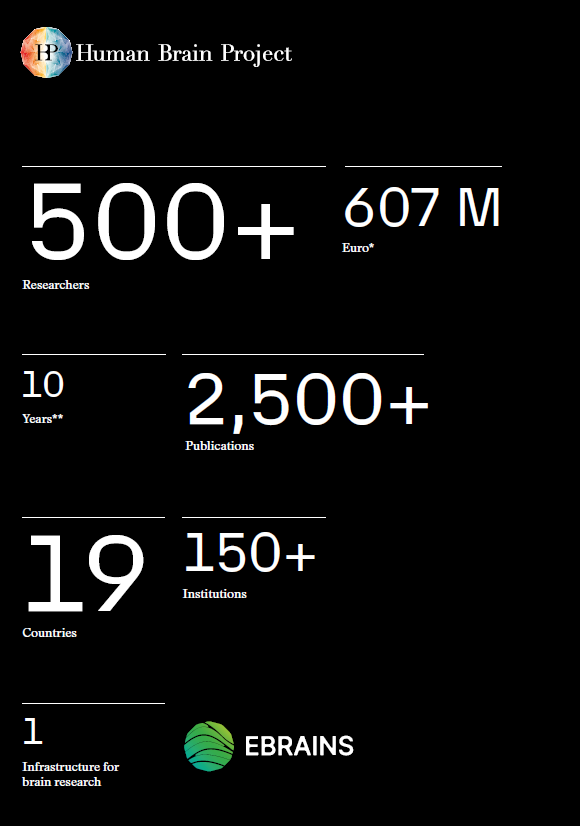
▷ Figure 3. HBP Data Overview. Source: HBP official website
Over the past decade, the HBP has accomplished a series of breakthroughs in advancing brain science research and technological applications. To date, more than 500 scientists from 155 research institutions across 19 countries have participated in the HBP. Supported by this project, participating scientists have published over 3,000 papers, secured 92 patents, and incubated 12 companies. The EBRAINS database developed by the HBP is currently used by tens of thousands of scientists from nearly 1,500 research institutions.
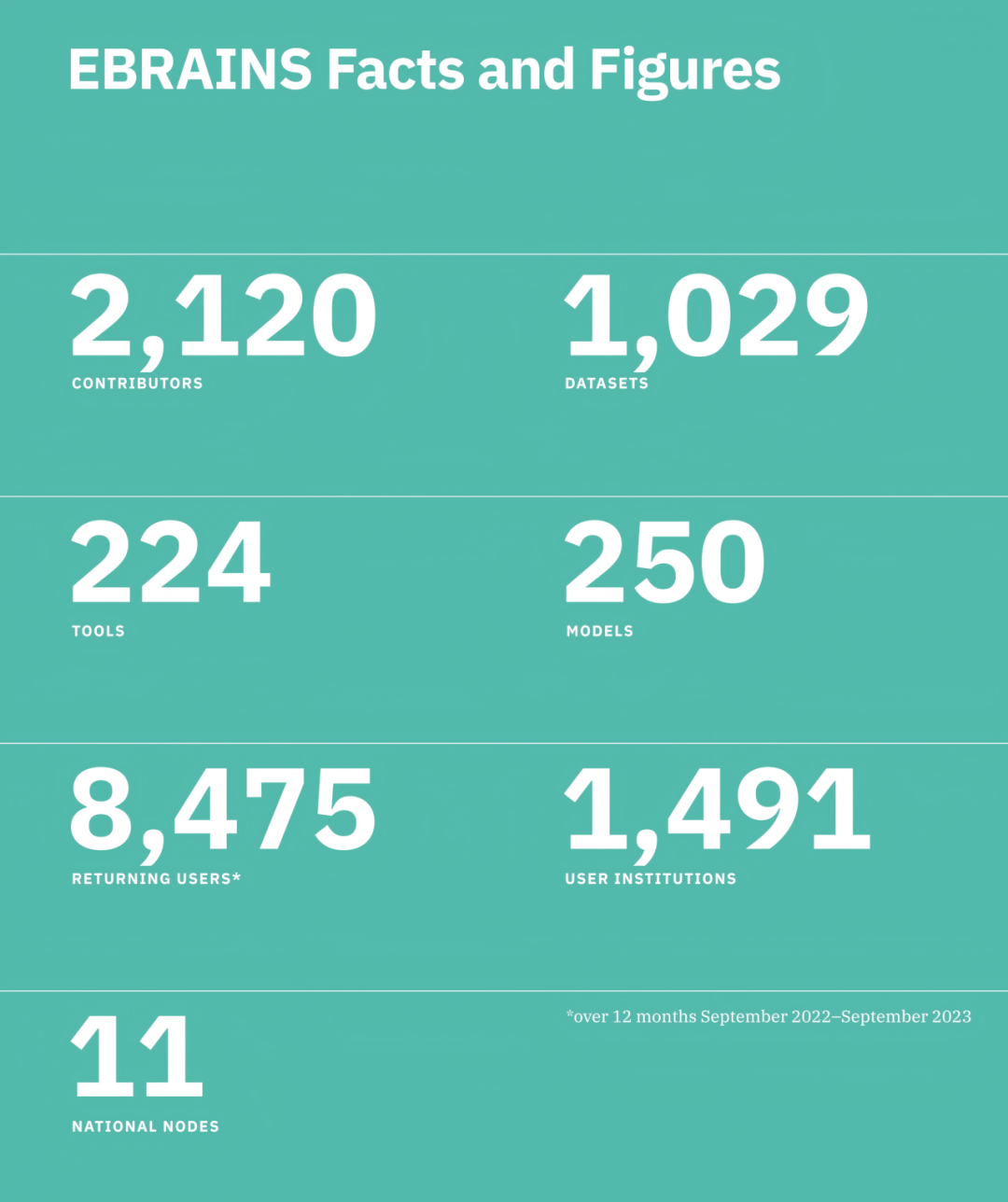
▷ Figure 4. Facts Related to the EBRAINS Database. Source: HBP official website

Main Research Areas of the HBP
The EU Human Brain Project (HBP) has garnered worldwide attention and is regarded as comparable to the U.S. BRAIN Initiative. However, the two initiatives differ fundamentally in their research directions: while the U.S. BRAIN Initiative focuses on the development and application of neurotechnologies, the EU’s HBP places greater emphasis on brain simulation and the development of the information and communication technologies essential for such research.
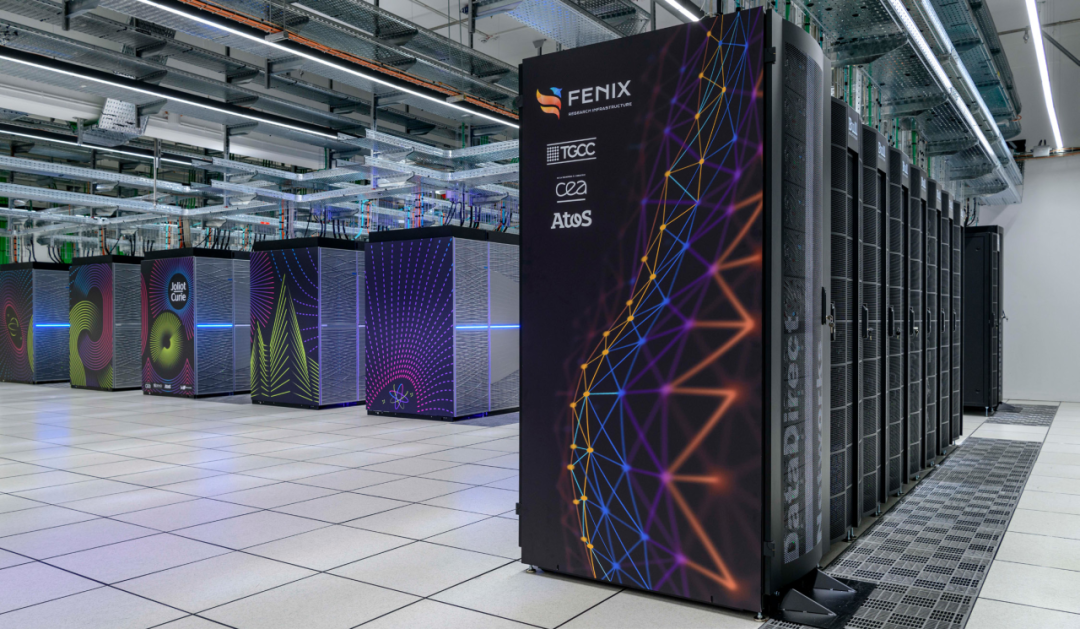
▷ Figure 5. Fenix builds various EBRAINS platform services, enabling both the neuroscience community and other research fields to advance their work. Source: HBP official website
The primary research areas of the HBP include the following:
(1) Neurodegenerative Disease Models: By employing advanced simulation techniques, researchers have developed models to study neurodegenerative conditions such as Alzheimer’s disease, Parkinson’s disease, and depression. These models offer new perspectives for diagnosing and treating these disorders.
(2) Brain Simulation and Computation: A core objective of the HBP is to create a comprehensive model of the brain. By leveraging large-scale computational platforms, researchers can simulate neuronal networks and investigate the brain’s functional dynamics and disease mechanisms. In constructing digital brain models, the HBP aids scientists in unraveling the complexities of brain function.
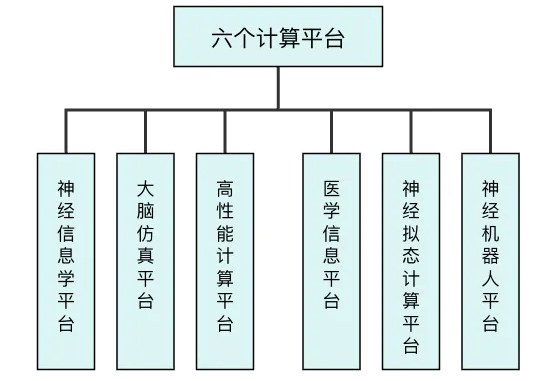
▷ Figure 6. One of the primary goals of the EU Human Brain Project is to design and implement six computational platforms.
(3) Advancements at the Intersection of Brain Science and AI: The HBP has not only propelled advancements in neuroscience but has also significantly influenced artificial intelligence research. By simulating biological neural networks, the project has introduced innovative insights into neural network technologies. The outcomes of brain science research under the HBP have enabled AI systems to handle perception, learning, and memory tasks more efficiently.
(4) Brain Data Sharing Platform: The HBP has developed an open-access platform named “EBRAINS,” which allows brain science researchers from around the globe to share data, tools, and computational resources. This collaborative infrastructure has fostered international scientific cooperation and accelerated progress in brain disease research.

Leading Scientists and Notable Achievements
To achieve these ambitious research objectives, the HBP has assembled leading experts from diverse fields, including neuroscience, computer science, and medicine. Over 500 scientists from various disciplines have participated in the project. Using functional simulations, computational methods, and advanced imaging technologies, these researchers have enhanced our systematic understanding of brain function, particularly in simulating and predicting neurodegenerative diseases. European and American scientists involved in the HBP have primarily focused on large-scale neural simulations, sharing and analyzing neural data, and digitally studying neurological diseases.
Below are some representative achievements:
Henry Markram
École Polytechnique Fédérale de Lausanne, Switzerland
As one of the founders of the Human Brain Project (HBP), Markram is devoted to creating a whole-brain simulation platform to investigate neural functions across different scales. The “Blue Brain Project,” which he initiated in 2005, provided valuable insights and experience that helped launch and advance the HBP.
Karl Friston
University College London, United Kingdom
Friston proposed the brain’s predictive coding theory, enabling researchers to better understand the mechanisms behind the brain’s signal processing.
Michael Hausser
University College London, United Kingdom
By developing cutting-edge optogenetic and neuronal recording techniques, Hausser’s team has explored the relationship between synaptic connectivity and brain function, thereby laying the groundwork for mapping the brain’s structure and function.
Alain Destexhe
Saclay University, Paris, France
Specializing in the study of the brain’s dynamic functions, Destexhe’s research focuses on the mechanisms behind the generation of brain waves and neuronal synchronization. His work has provided crucial support for deciphering neural signals.
Terrence Sejnowski
University of California, San Diego, USA
As a member of the HBP Advisory Board, Sejnowski concentrates on the computational functions of the brain and machine learning technologies, with a particular emphasis on enhancing artificial intelligence systems through brain modeling.
Christof Koch
Allen Institute for Brain Science, USA
At the Allen Institute, Koch and his team have developed a high-resolution brain atlas, achieving a more precise structural model of the human brain.

Participating Research Institutions and Budget
The HBP is a European-led initiative, supported by funding from the European Union’s Horizon 2020 research program. It involves research institutions, universities, and companies from multiple European countries, with key participants including Germany, Switzerland, France, the United Kingdom, Spain, and Italy. Major scientific institutions include European neuroscience research centers (such as the Max Planck Institute in Germany) and leading European universities (such as ETH Zurich and Paris VI University). Multinational companies like Intel and IBM have provided technical support for the development of computational platforms. In addition, scientists and institutions from non-EU countries—such as those from the United States and China—have also participated in collaborative projects.
The initially planned budget for the HBP was 1 billion euros, with the majority of the funding provided by the EU and supplemented by contributions from partner countries. The budget was allocated in phases, with approximately 500 million euros dedicated to the first five years (2013–2018). Subsequently, the project entered its second phase, securing hundreds of millions of euros in additional support. Over a ten-year period, the total budget may eventually reach roughly 1.5 billion euros, covering personnel costs, the construction of computing platforms, infrastructure investments, and research expenditures.

Other Brain Science Projects Similar to the HBP
There are several other research projects worldwide dedicated to in-depth studies of the brain. These initiatives have achieved significant results in advancing neuroscience, brain disease research, and artificial intelligence. Although they differ in budget, objectives, and technological approaches, they collectively contribute to a deeper understanding of brain function and its complex networks.
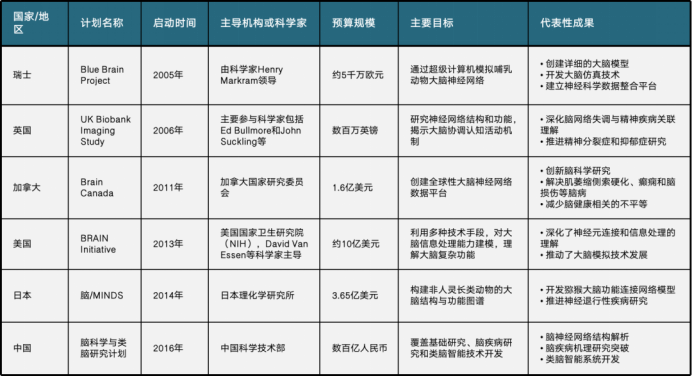

Project Achievements and Technological Innovations of the HBP
As a milestone project in humanity’s exploration of brain science, the HBP has undoubtedly been successful—evidenced by its research outcomes, the achievement of its goals, and favorable assessments from scientists both within and outside the project. Over the past decade, the HBP has not only made outstanding contributions to neuroscience but also paved the way for technological innovations in fields such as artificial intelligence and medical diagnostics.
By championing an interdisciplinary approach, the HBP has effectively integrated brain science, computer science, and medicine, thereby establishing a new research paradigm and advancing the application of digital brain models across various domains, including medicine and technology. In particular, in the area of functional modeling, the project employs computer simulations to replicate brain function, thereby partially revealing how the brain processes information. Notably, the cortical column model has provided a fundamental basis for understanding neural networks.
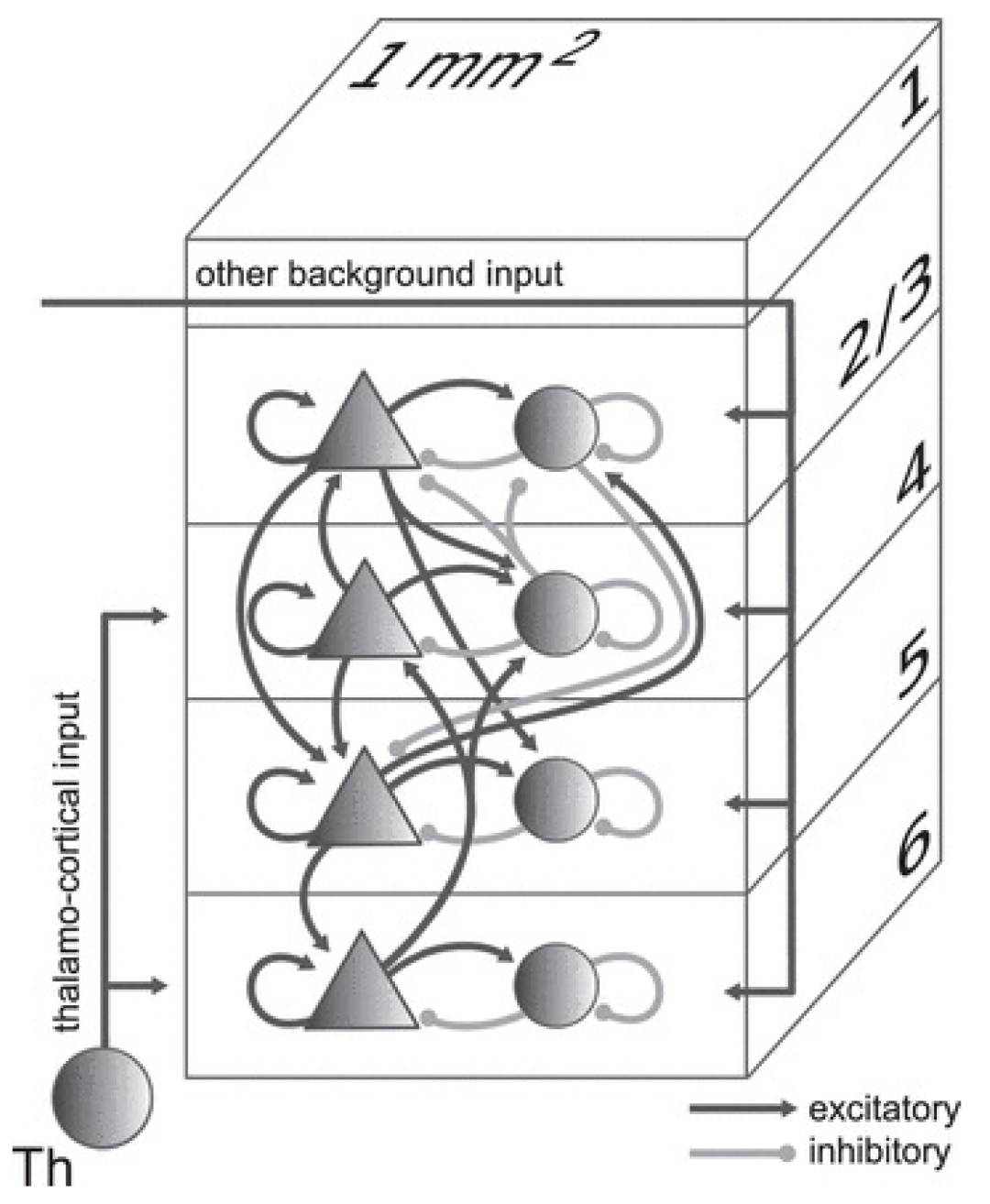
▷ Figure 7. A biomorphic model of the cortical column for content-based image retrieval. Source: MDPI, Telnykh, Alexander, et al. “A Biomorphic Model of Cortical Column for Content—Based Image Retrieval.” Entropy 23.11 (2021): 1458.
Thanks to substantial financial investment and an international network of collaboration, the HBP has deepened our understanding of brain structure and function while driving the practical application of digital brain models across diverse fields. The open-access platform established by the project provides researchers worldwide with invaluable tools and data resources, significantly advancing progress in the diagnosis and treatment of brain disorders.

Reflections on Limitations
Despite its remarkable achievements, several aspects of the HBP’s ten-year journey merit reflection. At its inception, the HBP set goals that were overly complex and optimistic. For instance, the project once attempted to simulate the entire brain comprehensively, yet current technology remains incapable of accurately replicating such an intricate system. As Peter Dayan, Director of Computational Neuroscience at University College London, noted, “The existing technology for simulating the human brain is not yet fully mature.”
Furthermore, these simulations remain limited when applied to larger-scale and more complex networks. In 2024, Nobel Prize in Physics laureate and “father of artificial intelligence” Geoffrey Hinton emphasized, “The real problem with the HBP is that scientists do not yet know how to enable large systems to learn autonomously.” On the project management front, transparency issues that emerged in 2015 attracted significant attention and criticism from the scientific community, prompting some researchers to withdraw. Additionally, some critics have argued that the project’s funds were not used efficiently, with substantial portions of the budget allocated to relatively immature or ambiguous technological developments.
These issues serve as a reminder that while large-scale scientific projects aim for groundbreaking outcomes, they also require pragmatic planning and meticulous management.

Future Prospects
Reflecting on the development of the HBP, we must acknowledge that brain science research still faces a number of fundamental challenges. These challenges are not only hurdles for the HBP but also key areas that the entire field of brain science must continue to explore:
· Overall Working Principles of the Brain: How are complex neuronal networks integrated to execute cognitive, emotional, and motor tasks?
· Neural Basis of Consciousness: How does consciousness emerge from the brain’s electrophysiological activity?
· Mechanisms of Memory and Learning: How is information encoded and retrieved through synaptic plasticity?
· Pathology of Neurological Disorders: How does an imbalance in brain health lead to psychiatric and neurological diseases?
Building on the research foundation established by the HBP, more than a hundred scientists have authored articles envisioning the next decade of brain science research [2]. They have highlighted several innovative technological directions worthy of attention:
· High-Resolution Brain Imaging Technologies: Next-generation functional magnetic resonance imaging (fMRI) and single-molecule resolution optical imaging will help reveal the flow of information within the brain with greater clarity.
· Brain-Machine Interface Technology: This is expected to yield breakthroughs in understanding neural signal transmission and treating brain disorders.
· Artificial Intelligence and Machine Learning: Their widespread application will further enhance our ability to analyze complex neural data, simulate brain function, and predict the behavior of neural networks.
· Next-Generation Molecular Biology Tools: The development of new tools—including, but not limited to, gene editing techniques—will deepen our understanding of the functions of specific neurons.
With the continuous advancement of new technologies and the invaluable experience accumulated by the HBP, our understanding of brain science is poised to accelerate in the coming years.

Postscript
Throughout its ten-year journey, the HBP has faced negative rumors. In 2015, some scientists issued an open letter to boycott the project; in 2017, the project’s lead figure was replaced; and in 2023, some media outlets even bluntly labeled the HBP as a failed project [3]. In Chinese discourse, the HBP has received limited attention, and existing reports—predominantly negative and echoing some international evaluations—have focused on issues such as unclear objectives, fragmented research efforts, and a lack of funding transparency.
For a scientific project of such enormous scale, negative voices are not uncommon; they are a natural manifestation of free expression and public oversight. From the Manhattan Project to the Apollo program and the Human Genome Project, every large-scale initiative has faced doubts and criticisms. Scientific exploration is inherently filled with uncertainty, particularly for massive projects. The key lies in discerning the facts through firsthand sources and a thorough understanding of the project’s actual progress, rather than being swayed by sensationalist public opinion.
Therefore, when evaluating the HBP, it is essential to return to the core questions: What has it truly accomplished over the past ten years? Has it achieved its intended objectives? Have its research outcomes been recognized within the field? The answers to these questions are the true criteria for judging the success or failure of a scientific project.
In reviewing the HBP’s ten-year journey, it is clear that the project has not only pushed the frontier of brain science research but also facilitated breakthroughs in numerous technologies and theories. In this light, the HBP is undoubtedly a successful project. As a milestone in humanity’s exploration of brain science, its significance will become increasingly apparent over time.
Reference:





